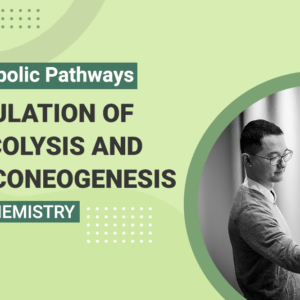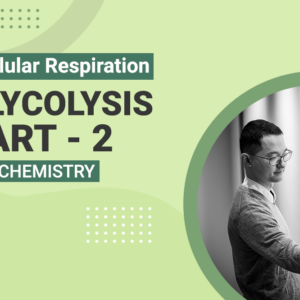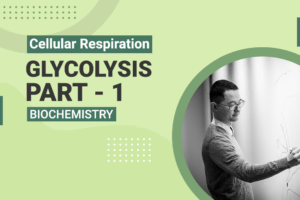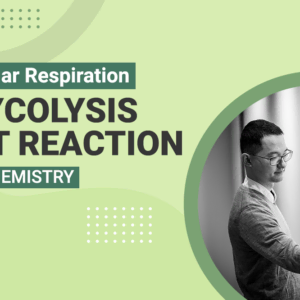In gluconeogenesis, which enzyme reduces oxaloacetate to phosphoenolpyruvate?
a) Pyruvate carboxylase
b) PEP carboxykinase
c) Fructose 1,6-bisphosphatase
d) Glucose 6-phosphatase
Glycolysis vs Gluconeogenesis
Aside from cellular respiration, other metabolic pathways are essential to understand for the MCAT exam. One such pathway is gluconeogenesis. Gluconeogenesis is the synthesis of glucose from pyruvate and other related compounds that occurs mainly in the cytoplasm of liver cells. In many ways, gluconeogenesis is the opposite of glycolysis. Glycolysis takes a molecule of glucose and breaks it down into two pyruvate molecules, whereas gluconeogenesis takes two pyruvate molecules and makes glucose. Gluconeogenesis and glycolysis are not complete opposites of each other, however. Figure 1 shows a comparison of both processes.

Figure 1. Glycolysis vs. Gluconeogenesis
Notice that seven of the ten steps of glycolysis are simply reversed in gluconeogenesis. Reversing the process means that seven steps employ the same enzymes in both pathways. However, there are three steps in glycolysis that are irreversible because they are exergonic processes and cannot be reversed using the same enzymes. Those three steps require a separate set of enzymes to proceed. The overall reaction of gluconeogenesis is as follows:
2 Pyruvate + 4 ATP + 2 GTP + 2 NADH + 2 H+ + 2 H2O → Glucose + 4 ADP + 2 GDP + 6 Pi + 2 NAD+
Gluconeogenesis is an overall exergonic process which may seem confusing since glucose is being formed. However, note in the reaction equation that there are six molecules with phosphate bonds that are hydrolyzed, releasing energy. Thus, the reason why gluconeogenesis is an irreversible, exergonic process is because it requires the expenditure of energy-storing nucleotides like ATP.
Irreversible Steps of Glycolysis in Gluconeogenesis
Now let’s look at the three irreversible steps in gluconeogenesis. The first step is the conversion of pyruvate to phosphoenolpyruvate (Figure 2). Unlike the reverse, single-step glycolytic process, this process requires two steps. The first (Step 1a) is the conversion of = pyruvate to oxaloacetate by pyruvate carboxylase; this step requires ATP investment.
 Figure 2. Gluconeogenesis - Irreversible Step 1a
Figure 2. Gluconeogenesis - Irreversible Step 1a
In the second step (Step 1b), oxaloacetate is decarboxylated and phosphorylated by phosphoenolpyruvate carboxykinase to form phosphoenolpyruvate (Figure 3). In this reaction, one GTP molecule is hydrolyzed to GDP, therefore, in the overall process, both ATP and GTP are required to convert pyruvate to phosphoenolpyruvate. Also note that in reality, two pyruvate molecules go through this process in order to make one glucose molecule, so the net energy expenditure in this step is two ATP and two GTP.

The next irreversible step is the conversion of fructose 1,6-bisphosphate to fructose-6-phosphate. This step is the reverse of step three of glycolysis. In this step, one of the phosphate groups from fructose 1,6-bisphosphate will be hydrolyzed, forming fructose-6-phosphate. This reaction is catalyzed by the enzyme fructose 1,6-bisphosphatase and, like step 3 of glycolysis, is the rate-limiting step in gluconeogenesis.
The last irreversible step is the conversion of glucose-6-phosphate to glucose. Like the previous irreversible step of gluconeogenesis, this step is also a hydrolysis reaction. Specifically, the phosphate group of glucose-6-phosphate is removed by hydrolysis, resulting in glucose and inorganic phosphate. This reaction is catalyzed by glucose-6-phosphatase.
Regulation of Gluconeogenesis
In a different post, we discuss the regulation of gluconeogenesis and glycolysis. Involved in the regulation of these two pathways are molecules like glucose, citrate, ATP, and AMP, which signal cellular energy levels, as well as hormones like insulin and glucagon, which signal whether the body is a fed state or not.
Explore More
MCAT Masterclass Chapters
Take a closer look at our entire MCAT Masterclass or explore our lessons below.
- Regulation of Glycolysis and Gluconeogenesis View Subject
- Glycolysis Part 1 View Subject
- Glycolysis Part 2 View Subject
- Glycolysis Net Reaction View Subject
- Pyruvate Dehydrogenase Complex View Subject
- Glycogen Structure & Glycogenolysis View Subject




